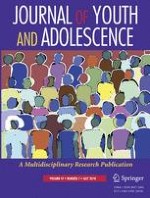18-12-2017 | Empirical Research
The Dynamic Relationship between Unhealthy Weight Control and Adolescent Friendships: A Social Network Approach
Gepubliceerd in: Journal of Youth and Adolescence | Uitgave 7/2018
Log in om toegang te krijgenAbstract
Although adolescence marks a vulnerable stage for peer influence on health behavior, little is known about the longitudinal and dynamic relationship between adolescent friendship and weight control. The current study aims to explain these dynamic processes among a sample of 1156 American adolescents in grades 9–11 (48.6% girls, 23.4% European American, 25.2% African American) from the National Longitudinal Study of Adolescent Health. Stochastic actor-oriented models were fit to examine changes in friendship networks and unhealthy weight control across two waves. The findings support a bidirectional relationship where weight control predicts future friendship seeking and friendship seeking predicts future weight control. The findings also indicate that adolescents prefer friends with similar weight control patterns. Taken together, the results of the current study indicate that adolescent friendships play an integral role in the development of unhealthy weight control and thus can be used to identify adolescents at risk and serve as targets within preventive interventions.
